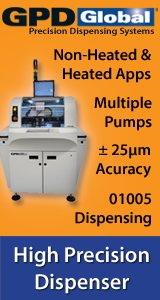Printed Circuit Board Assembly & PCB Design Forum
SMT electronics assembly manufacturing forum.
- SMTnet
- »
- Electronics Forum
- »
- Mix Technology Board Processes
Mix Technology Board Processes
Views: 3216
![]() Instead of using adhesives to glue the back side SMD compone...
- Apr 20, 2007
by
Instead of using adhesives to glue the back side SMD compone...
- Apr 20, 2007
by
![]()
![]()
![]() Hi T,
Gluing parts to the back side for wave solder is a ...
- Apr 23, 2007
by
Real Chunks
Hi T,
Gluing parts to the back side for wave solder is a ...
- Apr 23, 2007
by
Real Chunks
![]()
![]()
![]() Glue application is widely used in my country.However, some ...
- Apr 23, 2007
by
Grayman
Glue application is widely used in my country.However, some ...
- Apr 23, 2007
by
Grayman
![]()
![]()
![]() Wow, you're using the Surface Mount Adhesive for mechanical ...
- Apr 23, 2007
by
Dirk Nuendyke
Wow, you're using the Surface Mount Adhesive for mechanical ...
- Apr 23, 2007
by
Dirk Nuendyke
![]()
![]()
![]() We agree with Grayman. You should clean your fixtures. If ...
- Apr 23, 2007
by
davef
We agree with Grayman. You should clean your fixtures. If ...
- Apr 23, 2007
by
davef
![]()
![]()
![]() We have eliminated the adhesive process as much as possible....
- Apr 23, 2007
by
Cross
We have eliminated the adhesive process as much as possible....
- Apr 23, 2007
by
Cross
![]()
![]()
![]() Thank you all for your feedback. Our backside are 99.9% with...
- Apr 23, 2007
by
Thank you all for your feedback. Our backside are 99.9% with...
- Apr 23, 2007
by
![]()
![]()
![]() Why leave them out? Solder shorts?
...
- Apr 24, 2007
by
Why leave them out? Solder shorts?
...
- Apr 24, 2007
by
![]()
![]() There are several pallet manufacturers, Ascentec Engineering...
- Apr 27, 2007
by
Dirk Nuendyke
There are several pallet manufacturers, Ascentec Engineering...
- Apr 27, 2007
by
Dirk Nuendyke
![]()
Theresa Spear
- SMTnet
- »
- Electronics Forum
- »
- Mix Technology Board Processes








